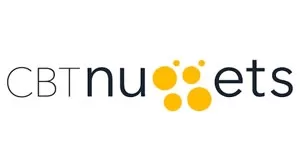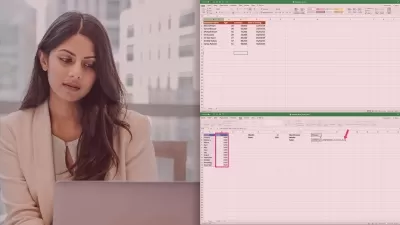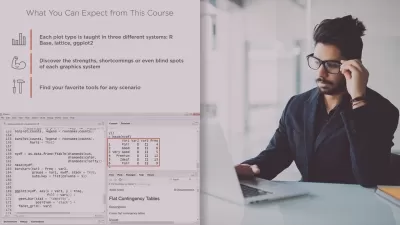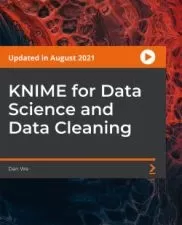Programming for Data Science Online Training
Jonathan Barrios
20:02:35
Description
This intermediate Programming for Data Science training prepares learners to write code that makes sense of unstructured sets from multiple channels and sources and processes information you need, how you need it.
Coding and programming is fundamental to data science. If you want a career in data science, you have to plan on learning at least one or two programming languages, or else prepare yourself for a job hemmed in and restricted by whatever programs you happen to get your hands on.
More details
When you learn programming for data science, you unlock the power of making your data do exactly what you'd like it to do for you. Without programming, your results and findings are dependent on someone else's program and code — unlock your own future in data science by learning a programming language.
Once you're done with this Programming for Data Science training, you'll know how to write code that makes sense of unstructured sets from multiple channels and sources and processes information you need, how you need it.
For anyone who leads an IT team, this Data Science training can be used to onboard new data analysts, curated into individual or team training plans, or as a Data Science reference resource.
Programming for Data Science: What You Need to Know
This Programming for Data Science training has videos that cover topics including:
- Writing reusable Python functions for data science
- Writing Python code using object-oriented programming (OOP)
- Wrangling data with Numpy and Pandas
- Visualizing data with Matplotlib and Seaborn
Who Should Take Programming for Data Science Training?
This Programming for Data Science training is considered associate-level Data Science training, which means it was designed for data analysts and data scientists. This data science skills course is designed for data analysts with three to five years of experience with data science.
New or aspiring data analysts. Brand new data analysts should get started with a course like this that familiarizes them with all the programming language options that are out there. Start your career off with a primer in how analysis becomes more useful and faster with the right coding languages, and get started writing in them.
Experienced data analysts. If you've been working as a data analyst for several years and haven't learned a programming language yet, this course can help you understand why it's important and which one would be the right fit for you. Learning a coding language isn't as daunting as you might think — try out this course and see how to incorporate programming into your data science.
User Reviews
Rating
Jonathan Barrios
Instructor's Courses"Helping aspiring data professionals learn about data and seeing them succeed is one of my greatest passions as a trainer. I love to learn, share my knowledge, and help others succeed—this is why I am passionate about being a trainer at CBT Nuggets."
Jonathan started his career as a full-stack developer and quickly became interested in combining his online education experience with his data science and machine learning knowledge. Jonathan has been a programmer, data analytics instructor, and curriculum writer for several leading online education platforms is excited to share his skills and education experience with aspiring data practitioners at CBT Nuggets.
Certifications: None
Areas of expertise: Full-stack software development, data analytics, data science, machine learning, and cloud technologies such as AWS and Google Cloud. HTML, CSS, JavaScript, PHP, Python, SQL, NoSQL, and frameworks/libraries such as Laravel, Vue, Tailwind, React, Gatsby, Django, NumPy, pandas, Matplotlilb, Scrappy, BeautifulSoup, SciPy, Seaborn, Plotly, Scikit-learn, Tensorflow, and PySpark.

CBT Nuggets
View courses CBT Nuggets- language english
- Training sessions 155
- duration 20:02:35
- Release Date 2023/07/01










